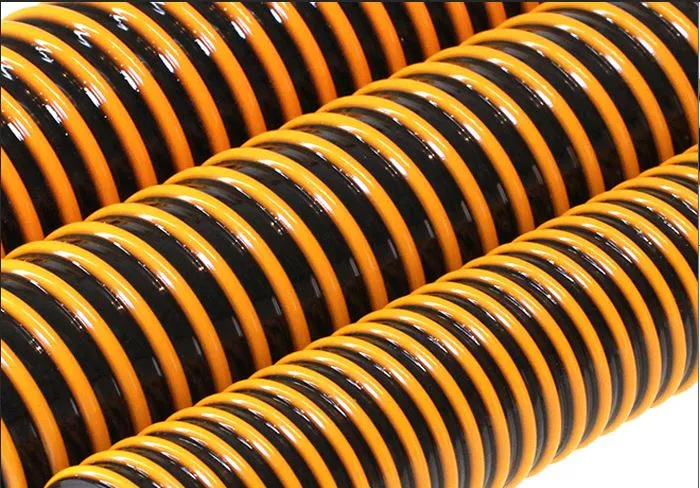High-Pressure LPG Hose Pipe for Safe and Efficient Gas Transportation
Understanding LPG Hose Pipes A Comprehensive Guide
Liquefied Petroleum Gas (LPG) is a popular fuel used in various applications, ranging from heating and cooking to powering vehicles and industrial processes. To efficiently transport LPG from one point to another, a reliable and durable LPG hose pipe is essential. This article will explore the features, types, and safety considerations associated with LPG hose pipes.
What is an LPG Hose Pipe?
An LPG hose pipe is a flexible tube specifically designed to transfer liquefied petroleum gas safely. Made from materials resistant to high pressures and temperatures, these hoses are built to withstand the challenges of transporting LPG without leaking or rupturing. Typically coated with synthetic rubber, these hoses may also include reinforcing fabrics or steel wires, enhancing their strength and flexibility.
Key Features of LPG Hose Pipes
1. Durability LPG hose pipes must be tough enough to endure various environmental conditions and mechanical stresses. The materials used must resist wear, abrasion, and damage from UV rays and chemicals.
2. Temperature Resistance LPG can exist in both liquid and gaseous states, requiring hoses that can handle a wide range of temperatures. Most LPG hose pipes can operate effectively at temperatures ranging from -20°C to 60°C.
3. Pressure Rating LPG is stored under pressure, making it critical for hoses to have the appropriate pressure ratings. The working pressure rating of an LPG hose often exceeds the typical pressure levels of LPG tanks and systems to prevent leaks.
4. Compatibility LPG hoses must be compatible with other materials and systems they connect to, ensuring that the gas does not react with the hose material. This compatibility is vital for maintaining safety and performance.
5. Safety Features Many LPG hoses come equipped with safety features such as flame retardance and anti-static properties, which help mitigate the risk of fire or explosion in the event of a leak.
Types of LPG Hose Pipes
LPG hoses are available in various types, each designed for specific applications. Some common types include
- Rubber LPG Hoses These are the most widely used hoses, offering excellent flexibility and durability. They are suitable for both residential and commercial use.
- PVC LPG Hoses Lightweight and chemically resistant, PVC hoses are often used for lower-pressure applications. They are not as durable as rubber hoses but can be suitable for specific situations.
- Stainless Steel Braided Hoses Ideal for high-pressure applications, these hoses are reinforced with a stainless-steel braid, providing added strength and protection. They are commonly used in industrial settings.
lpg hose pipe

Installation and Maintenance
Proper installation and maintenance of LPG hose pipes are crucial for ensuring safety and longevity. Here are several key considerations
1. Correct Sizing Ensure you select the correct diameter and length of the hose for your specific application. Oversized or undersized hoses can lead to inefficiencies and safety hazards.
2. Secure Connections Use the appropriate fittings and clamps to secure the hose connections. Loose connections can lead to leaks, posing a significant risk.
3. Regular Inspections Regularly check hoses for signs of wear, such as cracks or bulges. Any damaged hoses should be replaced immediately to prevent leaks.
4. Installation by Professionals It is advisable to have LPG hoses installed by certified professionals who understand the regulations and safety standards involved in working with pressurized gas systems.
Safety Considerations
Working with LPG entails inherent risks, making safety a top priority. Here are some safety tips to consider
1. Leak Detection Regularly check for leaks, employing methods such as using soapy water to detect escaping gas bubbles.
2. Ventilation Ensure that areas where LPG is used or stored are well-ventilated to prevent the accumulation of gas.
3. Emergency Preparedness Be aware of the steps to take in the event of a gas leak or fire. Having fire extinguishers and clear evacuation routes is essential.
4. Training Equip all personnel handling LPG systems with the necessary training and knowledge of safety procedures.
Conclusion
LPG hose pipes play a critical role in safely transporting liquefied petroleum gas across various applications. By understanding their features, installation processes, and safety considerations, users can effectively ensure safe and efficient LPG transportation. As LPG continues to serve as a vital energy source, the importance of reliable and durable hose pipes cannot be overstated.
-
Upgrade Your Water Management with Premium PVC Water Hoses by Leading ManufacturersNewsMar.12,2025
-
Understanding PU Pneumatic Hose: A Comprehensive GuideNewsMar.12,2025
-
Transform Your Gardening Experience with Premium PVC Garden HosesNewsMar.12,2025
-
The Ultimate Guide to Polyurethane TubingNewsMar.12,2025
-
The Essential Guide to Lpg Hose: Safety, Quality, And ValueNewsMar.12,2025
-
Discover the Benefits of PVC Air HosesNewsMar.12,2025














